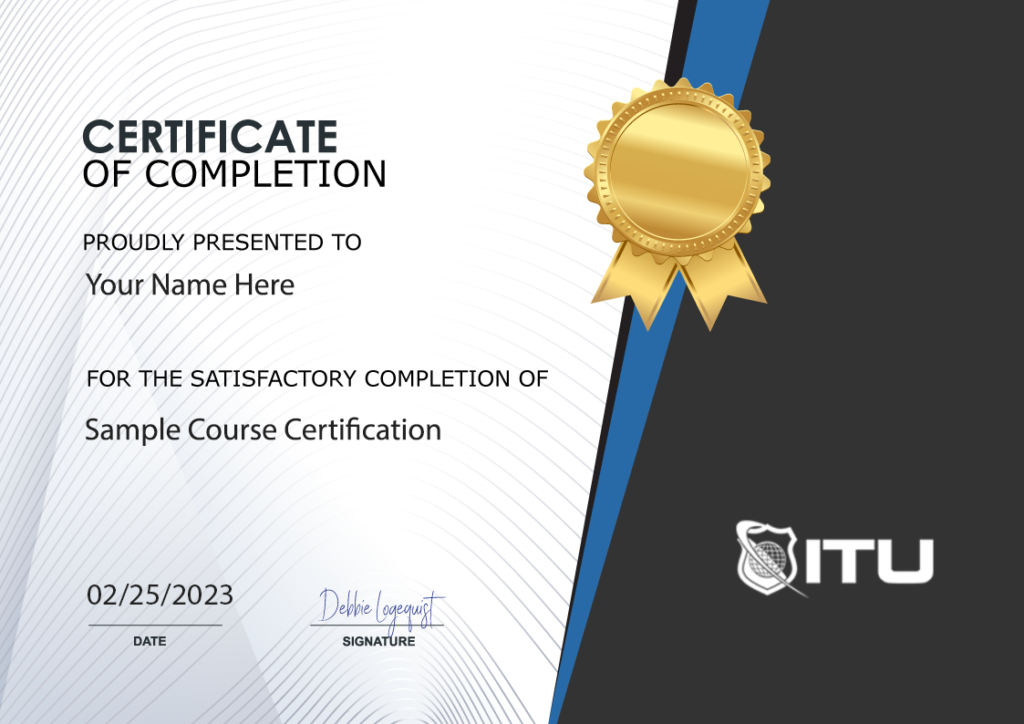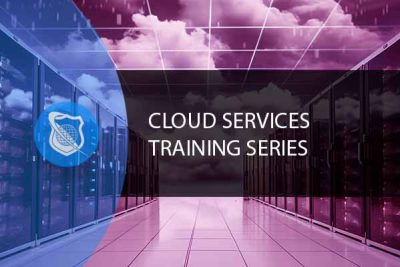
Lifetime
An ITU Online Training exclusive. The only Buy Once, Never Pay for IT training again program available. Plus, get all new and updated content for life.

With an All-Access Pass, you get access to every current and future ITU course. Access over 2,500 hours of on-demand IT Training 24/7. With over 13,000 on-demand training videos and 19,000+ practice questions, you'll have the tools to excel in the critical IT skills needed to elevate your IT Career. Our All-Access pass is available in three affordable plans.
Paris is the capital of France.
Tokyo is the capital of Japan.
Most Popular
Categories


With an All-Access Pass, you get access to every current and future ITU course. Access over 2,500 hours of on-demand IT Training 24/7. With over 13,000 on-demand training videos and 19,000+ practice questions, you'll have the tools to excel in the critical IT skills needed to elevate your IT Career. Our All-Access pass is available in three affordable plans.

ITU provides a vast array of IT-focused on-demand training designed to help you excel in both entry-level and advanced IT skills. Browse our most popular training or take a deper dive into our robust catalog of training categories.
Popular Courses All Categories





Learn Google Cloud, Amazon Web Services and Microsoft Azure cloud environments with our 10 course cloud computing courses bundle. Accelerate your career in cloud computing.
Included In This Course
Closed Captions
Certificate of Completion
Course Description
As the cloud computing industry continues to grow, understanding its concepts, purpose, and use cases will become an increasingly valuable skill for both IT and non-IT professionals. This 10-course bundle includes over 130 hours of training covering cloud services and virtualization. Whether you are looking at migrating your internal infrastructure to Amazon Web Services (AWS), Microsoft Azure or keeping your infrastructure in-house and expanding via virtualization, this bundle is for you.
This bundle includes the following courses:
In this cloud computing courses training series, you will learn about cloud service and infrastructure from industry experts. Cloud computing refers to the hardware and software resources that are used to support the delivery of cloud services. It typically includes a combination of data centers, servers, networking equipment, storage systems, and other hardware, as well as the software and operating systems that are used to manage and coordinate these resources. Cloud technology service infrastructure is typically owned and managed by a cloud service provider, which makes it available to its customers over the internet (Google Cloud, Azure App Services, AWS Cloud Migration). Customers can then use this infrastructure to host their applications, store and process data, and access a range of other cloud computing resources and services.
Cloud service infrastructure is typically owned and managed by a cloud service provider, which makes it available to its customers over the internet. Customers can then use this infrastructure to host their applications, store and process data, and access a range of other cloud computing resources and services.
There are several different types of cloud infrastructure, including:
Expand you knowledge in cloud computing, Cloud Migration and Deployment, Network Architecture with our robust online cloud computing courses learning bundle.
Learn more about Microsoft Azure
Learn more about Google Cloud
Learn more about Amazon Web Service (AWS)
The Cloud Computing Courses bundle includes ten courses covering a range of topics including Google Cloud, Amazon Web Services (AWS), and Microsoft Azure. It provides over 130 hours of training that covers cloud services and virtualization. Some of the specific courses included are AWS – Introduction and Deep Dive, AWS Certified Cloud Practitioner, Certified Cloud Security Professional – CCSP, Cloud Computing Security Knowledge (CCSK), CompTIA Cloud Essentials+ (CLO-002), CompTIA Cloud+ (CVO-002), Google Cloud Platform (GCP) Certification Training, Microsoft AZ-203: Developing Solutions for Microsoft Azure, Microsoft AZ-900 Microsoft Azure Fundamentals, and VMWare vSphere 6.
This online course content is delivered through 766 videos, and students can check their understanding with 1,107 practice questions. It’s a part of the All Access Monthly Subscription which provides over 2,500 hours of on-demand content.
This online course includes modules on cloud fundamentals, Azure’s architecture, compute, networking and CDN, storage, Azure solutions, administration, and pricing and service level agreements and provides a comprehensive introduction to Azure and cloud computing
This course dives into topics like implementing VM solutions, developing Azure Platform as a Service, developing for Azure storage, implementing Azure security, monitoring and troubleshooting Azure solutions, and connecting to and consuming Azure and third party services. It’s designed for those who want to develop solutions on Azure.
The course focuses on accessing data, including topics like accessing data using ADO.NET, accessing data from a web service, managing Azure PowerShell, and implementing Azure storage. The second part of the course goes in-depth into designing and implementing WCF services.
The Azure Training Series provides a robust understanding of Azure, one of the leading cloud platforms used by businesses globally. Completing this training can help professionals enhance their skills in cloud computing, opening up new opportunities in their career paths. These courses can also prepare students for Microsoft certification exams, which are valuable credentials in the IT industry.

Course Outline
Danny Pugh is a highly experienced IT professional with a comprehensive background in Cloud Engineering. He has demonstrated an impressive career trajectory, marked by a series of significant achievements and responsibilities.
Dean has had fun for the past 20 years learning and teaching everything he can in technology and security. His consulting experience in accounting systems, inventory control, migrations, and patch management has breathed life into his 12 years in the class room. Dean is a courseware developer who specializes in CISSP and security training. He is the lead instructor for Expanding Security and teaches online as his main job. As a non-military person, he is a proud recipient of six mission coins.
Tom has years of experience building software for health insurance providers, medical providers, retail businesses, manufacturing, and both federal and state governments. His experience includes roles as software designer, developer and data analyst for Blue Cross Blue Shield of GA, Federated Stores (now Macy's), Tull Metals, Hughston Orthopaedic Clinc, and Director of IT for Health Images Inc. More recently he developed cash management software for the USDA Forest Service and Bureau of Land Management.
Tom enjoys teaching. He continues to help students and fellow employees learn the latest technologies to further their careers. Tom has been a Microsoft Certified Trainer since 1996 and has instructed thousands of students worldwide. He teaches courses related to application design, coding, security, database administration and cloud services.
Start this course for free with our 10-day trial of the all-access subscription providing access to over 2,600 hours of training.
$79.00 $47.40

Monthly All-Access Subscription
7 Days Free - $39.00 / month
A great option at an affordable monthly price.
Annual All-Access Subscription
$229 / year
A discounted price when paying for your All Access library on an annual basis.
Lifetime All-Access Library
$379 One time payment
Exceptional Value. Pay once, never have to buy IT training again.
$49.00
The CCNP Troubleshooting IP Networks 300-135 exam ascertains that the candidate possesses the information and abilities required to regularly maintain complex enterprise routed and switched networks.
$49.00
In this Microsoft 70-489: Developing Sharepoint Advanced Solutions course you will learn how to create efficient applications for Sharepoint 2013, work with managed metadata solutions, work with the search service, implement enterprise content management, develop publishing sites, and interact with business continuity services.
$49.00
Ready to jumpstart your tech career? The Microsoft MTA 98-367 – Security Fundamentals course provides the necessary skills and knowledge for you to ace the Microsoft MTA 98-367 exam. Developed by experts, this training offers a comprehensive overview of essential technology concepts from Microsoft Technology Associate (MTA) certification exams which are set up to verify basic understandings needed when beginning work with Windows technologies.

Unlock endless learning opportunities with over 2,500 hours of IT training at our lowest price ever. Plus, get all new and updated online courses for free while your subscription remains active.
Cancel at your convenience. This exceptional deal on IT training provides you access to high-quality IT education at the lowest monthly subscription rate in the market. Boost your IT skills and join our journey towards a smarter tomorrow.
Mary Beth helped me. She was wonderful.